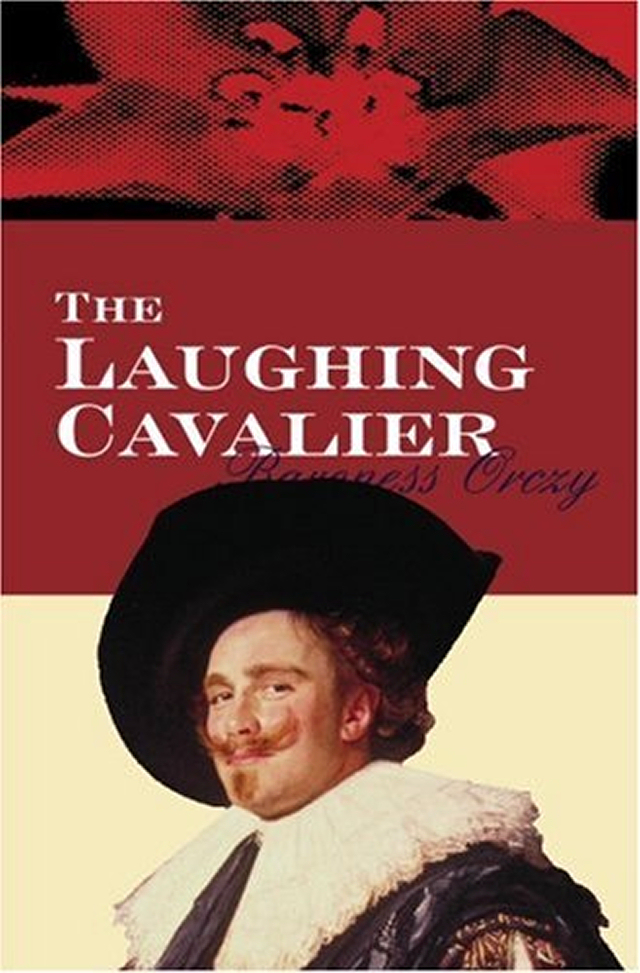
Sometimes there are books that two of us want to read, but one of us isn’t really interested in. In that case, instead of a triple take, we’ll do a doubletake instead.
The Plot
The year is 1624 and a plot has been hatched to kill the Prince of Orange. Gilda Beresteyn, the former fiancee of the lead plotter has inadvertently found out about their plans, and in order to prevent her alerting the authorities, the conspirators hatch a scheme to force her silence. Hired for the job: Diogenes, penniless mercenary, otherwise known as the Laughing Cavalier.
My Thoughts
In the nearly twenty years since I first read The Scarlet Pimpernel for school, I’ve never quite been able to work up the ambition to reread it. I’m not sure why: I’ve always remembered it fondly, I went to see the Broadway musical when it came around on tour, and I still listen to the soundtrack. But it’s always been in the back of my mind that I would read it again.
I think I was still in high school when I discovered there were sequels to the book, and that moved it higher on my radar. A stand alone novel is okay, but a series — a chance to find out more about the characters, to revisit them time and time again — that’s for me. But in the early 90s, pre Amazon, pre Alibris, pre Abebooks, pre eBay, pre WWW, there was no other place for me to find out of print books than the library. And the library didn’t have it.
Now, with print on demand and ebooks and Project Gutenberg and Google Books and all the other ways to find out of copyright texts and low-demand books, the Pimpernel series is pretty easy to acquire.
The Laughing Cavalier is chronologically the first of the series, part of a prequel duology to the main Pimpernel arc. The male protagonist, who goes by the pseudonym Diogenes, is an ancestor of Sir Percy Blakeney. This reveal doesn’t officially occur until the end of the book, but is touted on the back and in the author’s forward to the story, so is not really much of a spoiler or a secret.
The action here takes place in The Netherlands, and quite a bit of Dutch is sprinkled throughout the text. In other books I read random bits of French or sometimes German is very common, but Dutch is new and I found it very interesting. Even if most of what was said was implied to be swearing — that’s one way around the censors. And though the book itself is a reasonably good length (roughly 400 pages), the plot flows along at a very nice pace without dragging.
Since I know next to nothing about the history of The Netherlands, I really can’t say whether the political situation is realistic or not. One supposes that it is at least as believable as that surrounding the activities of the Pimpernel himself. In any case, the bulk of the plot surrounds the kidnapping of the main female character, Gilda, in order to prevent her from reporting the nefarious activities of her former fiancee and her brother. Diogenes is hired for this task, a fact which he finds utterly ridiculous — what sort of a brother entrusts his virginal sister to some random mercenary?
Gilda is a pretty good female character for an adventure book of this sort. She’s mostly a victim, shuffled back and forth between various captors, but she is at least able to speak her mind on more than one occasion and doesn’t spend all her time in a swoon or crying.
The setting is very well developed, with lots of cultural bits to make it interesting. There’s plenty of windmills and even a lot of long distance speed skating which anyone who watched the Olympics knows is a local obsession. Orczy includes the real world painter Frans Hals, who actually created the painting known now as The Laughing Cavalier. This, she suggests, is a portrait of Diogenes himself.
I did find Diogenes’s constant laughing to be a bit grating at times — though not nearly as much so as that of Mrs. Bradley in the series by Mitchell — but by the end there was at least some explanation for that and I found it less irritating. Perhaps the banter helped negate the irritation.
It appears that the story picks up almost immediately in the next book, The First Sir Percy, but this one does contain a complete and self-contained story arc.
In Short
My memory of The Scarlet Pimpernel novel has grown somewhat hazy over the intervening years, but it was always in my mind that I had enjoyed reading it. The Laughing Cavalier, a prequel novel to that one by the same author, was a breezy, fun adventure. After reading it, I’m not entirely sure why the Pimpernel is known mostly for just the one book rather than as a series; it certainly looks like it’s going to be worthwhile to go through them all.


I also found Diogenes and his laughing and smirking to be fairly annoying sometimes. I vastly preferred him in his odd moments of seriousness.
And “breezy” is the perfect way to describe this. It’s certainly not bad, but I guess it’s a bit insubstantial. Perhaps that accounts for its lack of classic status?
Maybe, but I don’t really recall The Scarlet Pimpernel itself being any more substantial. I mean, it deals with a weightier time in history, but I don’t recall that it really engages the issues at hand very deeply.